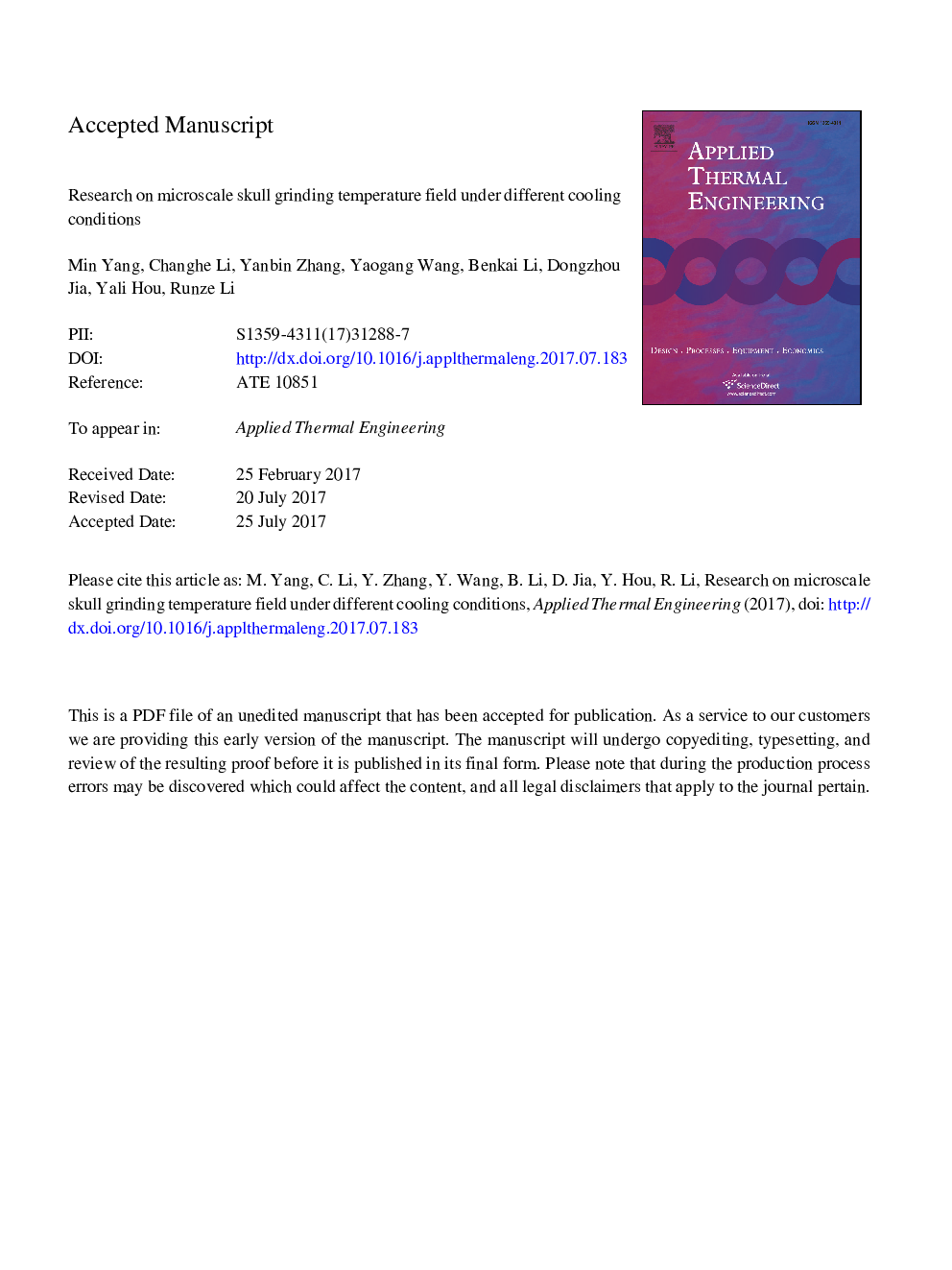| Article ID | Journal | Published Year | Pages | File Type |
|---|---|---|---|---|
| 4990458 | Applied Thermal Engineering | 2017 | 27 Pages |
Abstract
A study of microscale skull bone grinding temperature field under different cooling conditions is presented and discussed. Micro-grinding model, heat flux density model, convective heat transfer coefficient model and intra-workpiece heat conduction model are developed, based on which, a simulation study on microscale bone grinding temperature field under dry grinding, drip cooling, mist cooling, and nanoparticle jet mist cooling (NJMC) is performed. Simulation results show that NJMC displayed the lowest temperature peak (27.5 °C), followed by mist cooling, drip cooling, and dry grinding successively. A verification experiment using fresh bovine femur bone is performed under different cooling conditions. Results find that the temperature peak of dry grinding is 41.6 °C, which is 10.1%, 29.3%, and 37% higher than those of drip cooling, mist cooling, and NJMC, respectively, verifying the optimal cooling effect of NJMC. The experimental results are consistent with the theoretical analysis results, confirming the validity of the theoretical models.
Keywords
Related Topics
Physical Sciences and Engineering
Chemical Engineering
Fluid Flow and Transfer Processes
Authors
Min Yang, Changhe Li, Yanbin Zhang, Yaogang Wang, Benkai Li, Dongzhou Jia, Yali Hou, Runze Li,
